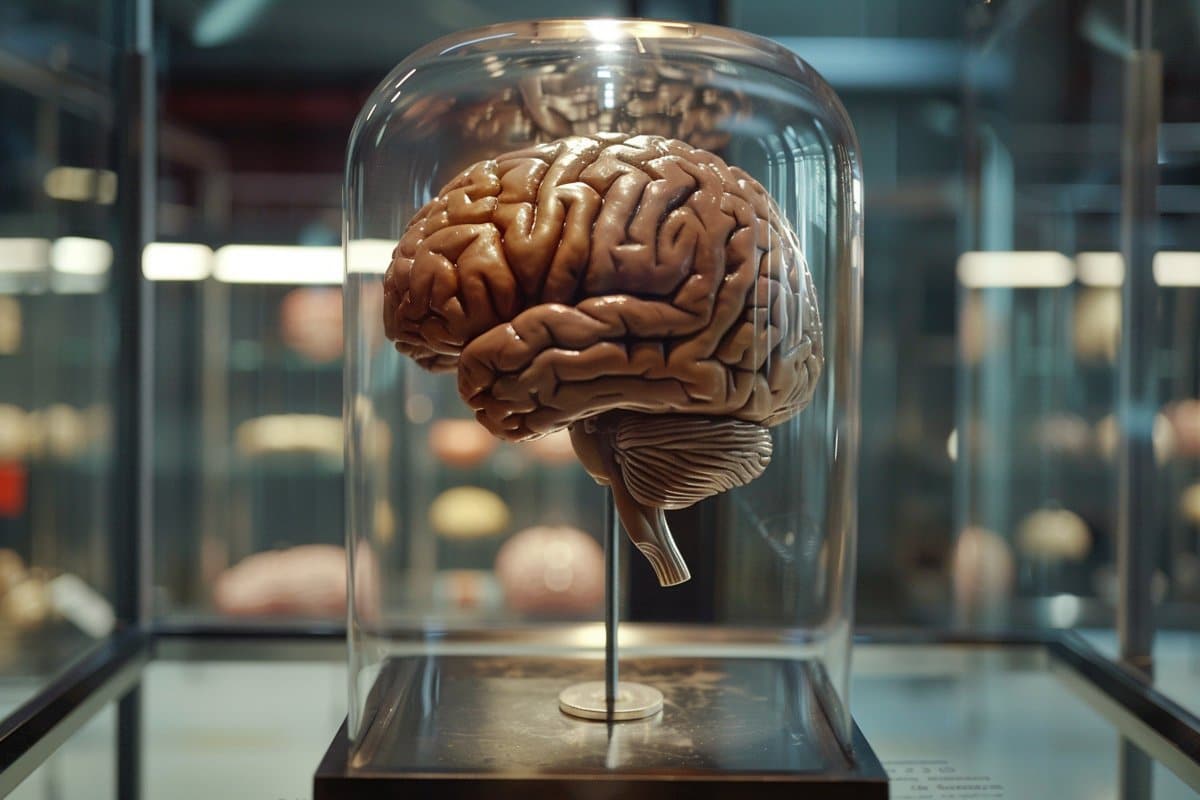Summary: Researchers developed an innovated a technique to convert complex neuroimaging data into audiovisual formats. By transforming brain activity and blood flow data from behaviors like running or grooming in mice into synchronized piano and violin sounds, accompanied by video, they offer an intuitive approach to explore the brain’s intricate workings.
This method not only makes it easier to identify patterns in large datasets but also enhances the understanding of the dynamic relationship between neuronal activity and behavior. The toolkit represents a significant step forward in neuroscientific research, enabling scientists to intuitively screen and interpret vast amounts of brain data.
Key Facts:
- Audiovisual Data Conversion: The toolkit translates neuroimaging data into a combination of musical notes and video, with different instruments representing various types of brain activity.
- Enhanced Pattern Recognition: This approach allows researchers to more easily identify correlations between specific brain activities and behaviors, enriching the analysis of complex neuroimaging datasets.
- Applications Across Experiments: Demonstrated across different experimental settings, including 2D and 3D brain imaging techniques, this method provides a versatile tool for neuroscientific exploration.
Source: PLOS
Complex neuroimaging data can be explored through translation into an audiovisual format – a video with accompanying musical soundtrack – to help interpret what happens in the brain when performing certain behaviors.
David Thibodeaux and colleagues at Columbia University, US, present this technique in the open-access journal PLOS ONE on February 21, 2024. Examples of these beautiful “brain movies” are included below.

Recent technological advances have made it possible for multiple components of activity in the awake brain to be recorded in real time. Scientists can now observe, for instance, what happens in a mouse’s brain when it performs specific behaviors or receives a certain stimulus.
However, such research produces large quantities of data that can be difficult to intuitively explore to gain insights into the biological mechanisms behind brain activity patterns.
Prior research has shown that some brain imaging data can be translated into audible representations. Building on such approaches, Thibodeaux and colleagues developed a flexible toolkit that enables translation of different types of brain imaging data—and accompanying video recordings of lab animal behavior—into audiovisual representations.
The researchers then demonstrated the new technique in three different experimental settings, showing how audiovisual representations can be prepared with data from various brain imaging approaches, including 2D wide-field optical mapping (WFOM) and 3D swept confocally aligned planar excitation (SCAPE) microscopy.
The toolkit was applied to previously-collected WFOM data that detected both neural activity and brain blood flow changes in mice engaging in different behaviors, such as running or grooming.
Neuronal data was represented by piano sounds that struck in time with spikes in brain activity, with the volume of each note indicating magnitude of activity and its pitch indicating the location in the brain where the activity occurred. Meanwhile, blood flow data were represented by violin sounds.
The piano and violin sounds, played in real time, demonstrate the coupled relationship between neuronal activity and blood flow. Viewed alongside a video of the mouse, a viewer can discern which patterns of brain activity corresponded to different behaviors.
The authors note that their toolkit is not a substitute for quantitative analysis of neuroimaging data. Nonetheless, it could help scientists screen large datasets for patterns that might otherwise have gone unnoticed and are worth further analysis.
The authors add: “Listening to and seeing representations of [brain activity] data is an immersive experience that can tap into this capacity of ours to recognize and interpret patterns (consider the online security feature that asks you to “select traffic lights in this image” – a challenge beyond most computers, but trivial for our brains)…[It] is almost impossible to watch and focus on both the time-varying [brain activity] data and the behavior video at the same time, our eyes will need to flick back and forth to see things that happen together.
“You generally need to continually replay clips over and over to be able to figure out what happened at a particular moment. Having an auditory representation of the data makes it much simpler to see (and hear) when things happen at the exact same time.”
About this neuroscience research news
Author: Charlotte Bhaskar
Source: PLOS
Contact: Charlotte Bhaskar – PLOS
Image: The image is credited to Neuroscience News
Original Research: Open access.
“Audiovisualization of real-time neuroimaging data” by Elizabeth Hillman et al. PLOS ONE
Abstract
Audiovisualization of real-time neuroimaging data
Advancements in brain imaging techniques have significantly expanded the size and complexity of real-time neuroimaging and behavioral data. However, identifying patterns, trends and synchronies within these datasets presents a significant computational challenge.
Here, we demonstrate an approach that can translate time-varying neuroimaging data into unique audiovisualizations consisting of audible representations of dynamic data merged with simplified, color-coded movies of spatial components and behavioral recordings.
Multiple variables can be encoded as different musical instruments, letting the observer differentiate and track multiple dynamic parameters in parallel.
This representation enables intuitive assimilation of these datasets for behavioral correlates and spatiotemporal features such as patterns, rhythms and motifs that could be difficult to detect through conventional data interrogation methods.
These audiovisual representations provide a novel perception of the organization and patterns of real-time activity in the brain, and offer an intuitive and compelling method for complex data visualization for a wider range of applications.






